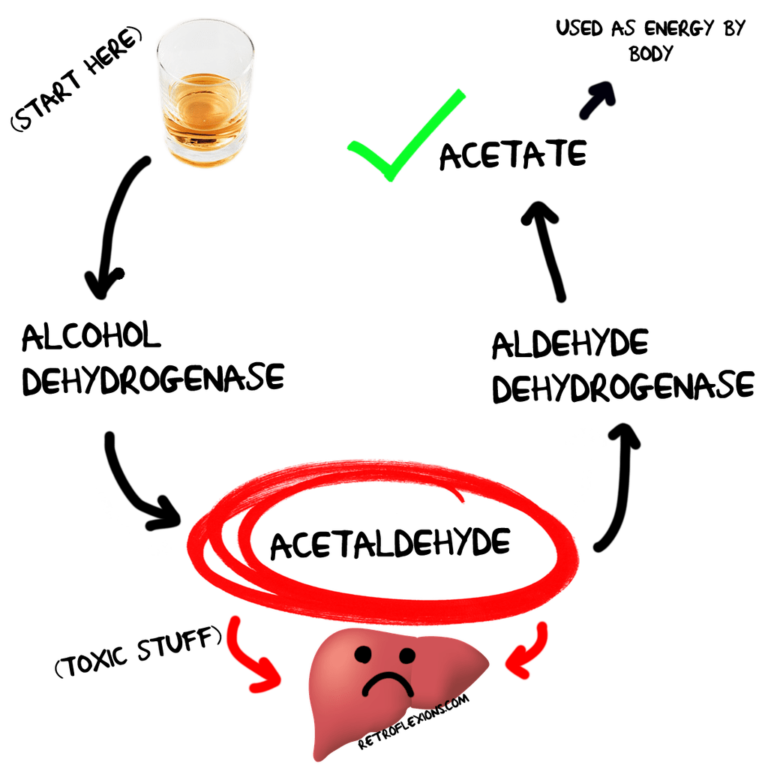|
Getting your Trinity Audio player ready...
|
You’re at a party. You’re buzzing as this is the first official encounter you’ll be having with your pals since lockdown ended. You enter the room. Drinks are flowing. Conversation is buzzing. The vibe is just top notch. You grab your first bottle of social lubricant; some dubious-looking austerity Lambrini from the bossman at your local off-licence. You take your first sip, wincing at the sensation as it trickles down your gullet, and ready yourself to hurl into the night of debauchery ahead.
A few moments later, you notice a tingling sensation envelop your face that stealthily mutates into a feeling of warmth, spanning your cheeks to your brows. You feel woozier than normal and decide to take a break from your tipple. Suddenly a barrage of questions including “are you okay” or “have you been smoking Marijuana” comes hurtling your way. You sigh. Lo and behold, the ever so familiar ghost of Asian flush is back once again to haunt your evening.

Alcohol flush reaction is a condition experienced predominantly by the East Asian population that results in red blotching of the face, neck and shoulders in association with the ingestion of alcoholic beverages. In some rarer situations, this can engulf significant portions of the body and can result in other phenomena such as heat flush, nausea, headaches and increased heart rate.
The reaction is caused by an enzyme deficiency (aldehyde dehydrogenase 2) that results in the accumulation of the by-product acetaldehyde.

Those from East Asian backgrounds living in non-East Asian countries may experience some stigmatisation as a consequence of so-called Asian flush.
I always remember feeling rather embarrassed about my appearance when drinking with my European counterparts. And whilst I do not experience it as badly as others, it is nonetheless an inherent insecurity that I have had to deal with.
I always knew that I had some predisposition to this syndrome given that my mother’s side cannot tolerate a beer without the adverse effects of alcohol taking hold. I vividly remember my Japanese grandfather pointing to the drinks cabinet in which he had stored the countless bottles of alcohol that he had received as gifts over the years, but was unable to consume them because of the effects of Asian flush.

When I was first introduced to alcohol in my late teens, I would sporadically experience the effects of Asian flush, but dismissed them simply as a normal reaction to alcohol: I had no knowledge of Asian flush, and consequentially no knowledge on how to suppress it. In a bid to lessen the effects, I would wash my face with cold water in hope that it would reduce the redness.
These situations were embarrassing and I always envied all my friends who never experienced such torment. Perhaps a mutual understanding of Asian flush would have ameliorated the embarrassment.
It wasn’t until my time at Manchester University that I was introduced to a medication known as Zantac (Ranitidine) by a friend in halls. This revolutionised my outlook, as this magical medication suppressed the flushing that had been troubling me for so long.
However, a few years later, I learned that Zantac specifically had been recalled by the Medicines and Healthcare Products Regulatory Agency (MHRA) due to concerns over contamination with an impurity that increases risk of certain cancers.
Upon further reading, it transpired that consuming antihistamines to prevent Asian flush is not recommended because in some cases it can lead to individuals consuming more alcohol than they can comfortably do so. In essence, Asian flush acts as a warning to decrease your pace of drinking.

Unbeknownst to most, acetaldehyde is a toxic metabolite that circulates around the body, exerting harmful effects on cells and tissues. This is what accumulates causing Asian flush, meaning those with some genetic predisposition to Asian flushing will be exposing their bodies to greater levels of harm in comparison to the average person. So suppressing the symptoms comes with the disadvantage of masking those warning signs.
Therefore, I now embrace the existence of my Asian flush and have come to terms with the symptoms that concerned me for so long. Through acceptance and educating of peers, I have found the condition to be manageable.
Autonomous choice is what dictates life and allows society to thrive. What I attempt to provide here is a personal account of my experiences with Asian flush and provide some insight into what I know about this condition. I am not here to dictate to you how you should live your life or dissuade you out of either lifestyle choices.
Certainly, the health implications of alcohol are well-documented but it is difficult to get through life in Western society without consuming alcohol, therefore what is important is to exercise the correct balance of both parameters. Access the information online via reputable scientific journals and refer to health professionals to gain greater insight and the balance that works for you.

